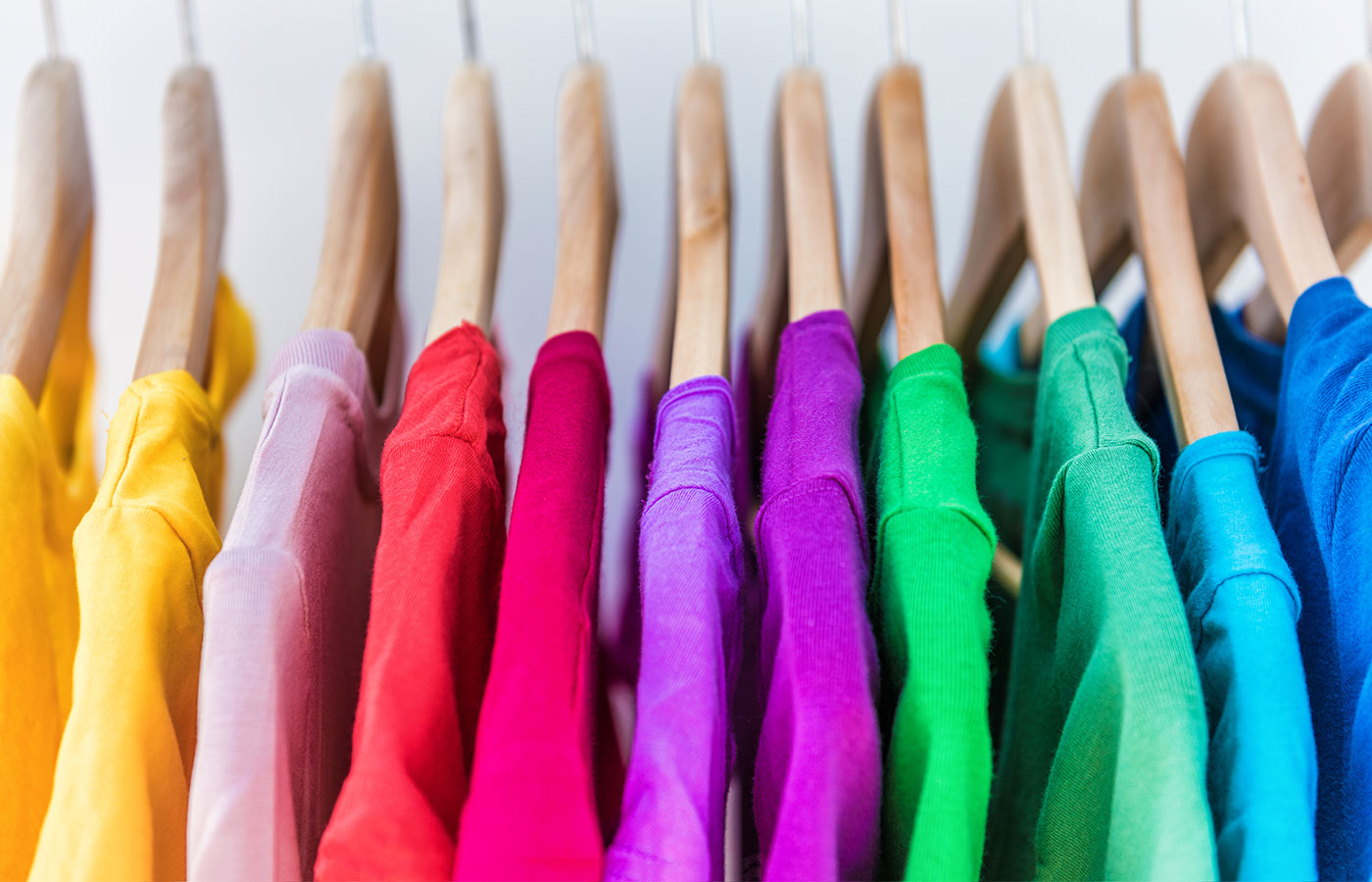How Sustainable Fabric Trends Are Shaping Branded Clothing Collections
How Sustainable Fabric Trends Are Shaping Branded Clothing Collections
Blog Article
Understanding Apparel: The Importance of Textile Selections in Your Wardrobe
The option of textile in clothes plays an essential duty in both appearances and capability. Different materials use differing degrees of breathability, longevity, and comfort, directly affecting the wearer's experience. Recognizing these subtleties can boost one's closet significantly. Yet, lots of overlook exactly how these selections can influence not just personal style, yet additionally sustainability. What textile choices could redefine your wardrobe and straighten it with both design and obligation?
The Duty of Textile in Style and Functionality

Usual Textile Kinds and Their Characteristics
When picking clothes, understanding the attributes of usual textile types is vital for making educated selections. Cotton, a widely-used natural fiber, is known for its convenience, breathability, and gentleness, making it suitable for casual wear and daily garments. Bed linen, one more natural alternative, flaunts outstanding moisture-wicking properties and a distinctive appearance, suitable for cozy climates.Wool, typically preferred for its warmth and longevity, varies in fineness; merino wool is soft against the skin, while coarser types are made use of for outerwear. Synthetic materials like polyester and nylon offer resilience and resistance to creases, making them popular for activewear and traveling garments. Ultimately, blends, which incorporate all-natural and artificial fibers, can improve functionality while keeping convenience. By acknowledging these textile characteristics, people can pick clothes that straightens with their way of living and aesthetic preferences.
Breathability and Convenience: Selecting the Right Fabrics for Various Environments
Picking the ideal fabrics for numerous environments can greatly improve convenience and overall wearability. Breathable materials are crucial in warm climates, as they enable air blood circulation and wetness dissipation. Fabrics such as cotton, bed linen, and moisture-wicking synthetics successfully attract sweat far from the body, keeping the user cool and completely dry. Alternatively, in chillier environments, thicker fabrics like wool or fleece give insulation while retaining breathability, making certain warmth without overheating.Additionally, the selection of material weight plays an essential duty; lightweight materials are better for summer season, whereas heavier choices are matched for winter season wear. Comprehending the one-of-a-kind residential or commercial properties of each textile makes it possible for individuals to dress suitably for varying climate condition. Eventually, selecting comfortable and breathable materials customized to specific climates can significantly improve day-to-day convenience and boost the overall experience of wearing apparel.
Longevity and Treatment: Just How Textile Influences Durability of Your Closet
Selecting the appropriate materials can considerably affect the durability and care demands of a closet. Fabrics such as cotton and polyester are understood for their strength and ease of maintenance, making them ideal for everyday wear. On the other hand, delicate products like silk and lace need more mindful handling and specialized cleaning approaches, which can increase the time and initiative required for care. Branded Clothing.Durability is likewise affected by the material's weave and surface; snugly woven fabrics tend to stand up to deterioration much better than loosely woven alternatives. Furthermore, artificial blends frequently offer enhanced durability, combining the most effective top qualities of multiple fibers.Understanding the treatment directions for each textile is essential, as incorrect drying out or washing can result in premature wear. Eventually, picking sturdy materials can result in a longer-lasting wardrobe, decreasing the frequency of replacements and adding to a more lasting fashion choice
The Impact of Textile on Fit and Silhouette

Sustainable Fabric Choices: Making Eco-Friendly Choices
The impact of fabric extends beyond fit and shape to incorporate environmental factors, prompting a growing passion in lasting fabric options. Environmentally friendly fabrics, such as organic cotton, hemp, and Tencel, are getting traction among consumers who prioritize sustainability in their wardrobes. These products are typically generated with fewer chemicals and water, decreasing their ecological footprint.Additionally, recycled materials, made from post-consumer waste, use an innovative remedy to the textile industry's pollution issue. Brands increasingly embrace transparency in their sourcing techniques, allowing customers to make informed choices about their purchases.Choosing sustainable materials not only supports ethical practices but likewise motivates the apparel industry to embrace even more liable production techniques. As understanding of ecological More Info concerns rises, individuals are prompted to assess the long-term impact of their fabric selections, cultivating a motion in the direction of an extra environmentally mindful and lasting approach to fashion.
Boosting Style: Just How Fabric Can Transform a Clothing
While numerous might concentrate on color and cut when choosing an attire, the selection of textile plays a crucial duty in elevating design and boosting overall look. Various materials communicate distinct moods and messages; for instance, silk exudes deluxe and sophistication, while jeans provides a casual, loosened up vibe. The appearance and drape of a material can substantially alter the shape, with structured textiles giving a sleek look and softer ones producing a more fluid, relaxed aesthetic.Moreover, the weight of the fabric affects wearability throughout periods. Lightweight textiles like bed linen and cotton are ideal for summer season, while heavier products such as woollen and velour supply heat and beauty in colder months. best site Recognizing fabric properties, such as breathability and stretch, also equips individuals to make informed selections that enhance comfort without compromising design. Eventually, the appropriate textile can transform an outfit from average to amazing, making it an important consideration in any closet.
Frequently Asked Concerns
How Do I Determine the Textile Web Content of My Apparel?
To determine textile content, one can check out care tags, conduct burn examinations for fiber identification, or seek advice from textile swatches. These techniques help distinguish products, making certain informed choices for clothing care and maintenance in daily wear.
Can Material Option Affect My Mood or Self-confidence?
Fabric option can greatly impact a person's state of mind and confidence. Branded Clothing. Particular materials might evoke feelings of convenience or beauty, while others can really feel unflattering or limiting, eventually affecting self-perception and emotional health throughout the day
What Fabrics Are Best for Sensitive Skin?
For people with sensitive skin, natural materials like bed linen, bamboo, and cotton are usually recommended. These products are breathable, hypoallergenic, and much less most likely to cause inflammation, making them appropriate selections for convenience and skin wellness.
Just how Do I Properly Clean and Take Care Of Different Fabrics?
To correctly wash and care for various fabrics, one should think about each material's specific requirements, including temperature setups, cleaning agents, and drying techniques, ensuring durability and keeping the fabric's original high qualities for suitable usage.
Exist Particular Fabrics for Athletic or Efficiency Put On?
Athletic or efficiency wear usually uses textiles such as nylon, polyester, and spandex. These materials are created for moisture-wicking, breathability, and flexibility, enhancing activity and comfort during physical activities while offering durability and support. On the other hand, in colder environments, thicker textiles like wool or fleece give insulation while retaining breathability, guaranteeing heat without overheating.Additionally, the selection of textile weight plays a vital duty; light-weight fabrics are preferable for summertime, whereas much heavier options are suited for winter wear. In comparison, delicate materials like silk and shoelace need even more cautious handling and specialized cleaning methods, which can increase the time and initiative needed for care.Durability is additionally influenced by the material's weave and surface; firmly woven materials tend to stand up to wear and tear much better than loosely woven choices. In comparison, stiff textiles can limit activity but give a timeless, refined look.Moreover, the thickness and structure of the fabric can influence the visual perception of body form. The effect of fabric extends beyond fit and shape to encompass ecological factors, motivating an expanding passion in sustainable fabric options. The texture and drape of a textile can dramatically modify the shape, with structured fabrics offering a sleek appearance and softer ones producing a more fluid, relaxed aesthetic.Moreover, the weight of the fabric affects wearability throughout seasons.
Report this page